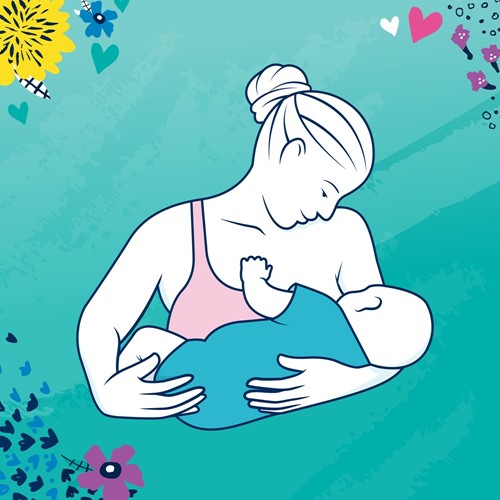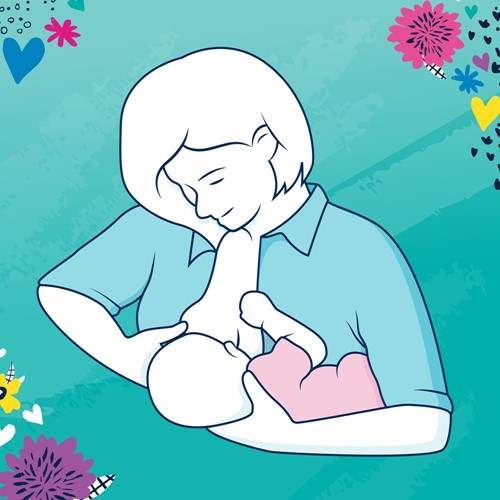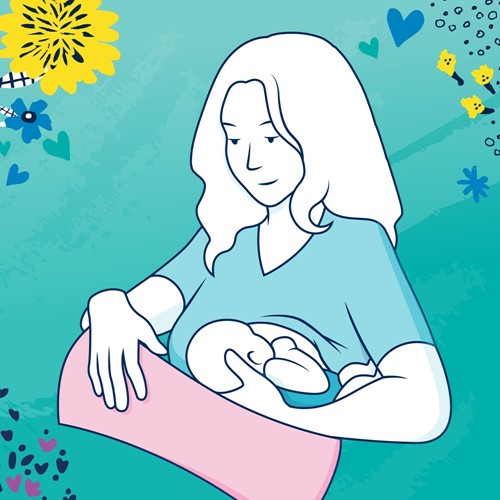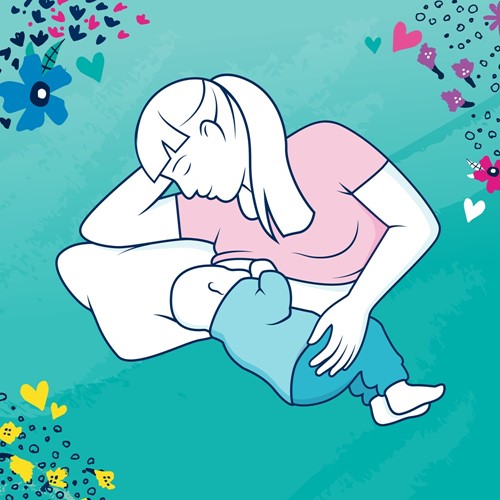Finding the right breastfeeding position can make feeding more comfortable for both you and your baby. Here are some of the best positions, along with tips to help you succeed.
Endorsed by Lara Taylor, Specialised Midwife.
When it comes to breastfeeding, what works for one mum and their baby, may not feel right to another! So, we're here to help you find what works for you, by taking you through our top tips for nursing comfortably and the different breastfeeding positions you can try.
Finding a breastfeeding position that works for you and your baby is vital, not only to make it a more comfortable and enjoyable experience, but to help your baby feed effectively.
To begin with it might feel like a game of trial and error, but that’s ok – it’s good to experiment and you'll soon work out which positions suit you both best. Some mums and babies may find there are actually two or three positions that work for them, whereas others may prefer to stick with just one. Remember, we’re all different so do what works for you.
Positioning goes hand-in-hand with attachment and so finding a comfortable breastfeeding position and understanding the reassuring signs to look for, will help your baby achieve a good, deep latch.
When breastfeeding, it's crucial to prioritise both your comfort and your baby's attachment to ensure a successful feeding experience. Here are some key tips to help you and your baby achieve the best positioning and attachment during breastfeeding:
Let Your Breast Sit Naturally:
Avoid Holding the Breast:
Bring Baby to Breast, Not Breast to Baby:
Comfortable Seating:
Optimal Latch:
Support Your Baby's Head and Body:
Maintaining a Healthy Attachment
Monitor the Latch:
Avoid Leaning In:
Frequent Burping: During and after feeding, burp your baby to release any swallowed air, which can help reduce fussiness and discomfort.
Stay Hydrated and Nourished: Ensure you are drinking plenty of fluids and eating a balanced diet to support your milk supply and overall health.
Seek Support: If you experience ongoing difficulties with latching or attachment, consider consulting a lactation consultant for personalised guidance and support.
By focusing on these tips, you can enhance your breastfeeding experience, promoting both your comfort and your baby's effective feeding.
There are many breastfeeding positions, and you may even find your own unique position, but the most common are:
The cradle hold is probably the most widely used breastfeeding position. In this position your baby lies across your body with its head resting in the crook of your arm, on the same side as you are nursing. The cradle hold is great for when you are out and about with your baby and is also ideal for older babies who latch on easily and have good control over their head movements.
How to do it:

The cross-cradle breastfeeding position is similar to the cradle hold but gives the most support to your baby and enables you to see your breast and baby’s mouth easily. This position can be a helpful one to try in the early days of breastfeeding, when your new baby is learning to latch, if you have a small baby or if their suck isn’t too strong. It allows your one arm free to support your breast and help your baby to latch on.
How to do it:

The laid-back breastfeeding position is relaxed and comfortable, encouraging your baby’s natural reflexes to move towards the breast and find the nipple. Your baby simply lies tummy to tummy, skin to skin Is best, with you in a feeding-ready position. This position often encourages your baby’s rooting reflex, which is when baby turns their head, and opens their mouth instinctively to feed, so is great for newborn babies, twins and babies that struggle to latch…and new mums too!
How to do it:

In this nursing position, your baby's body should be tucked under your arm like a rugby ball, with your baby’s legs and feet extending behind your back. The rugby hold is also ideal if you’re recovering from a C-section, have larger breasts or have inverted nipples. If you have twins, the rugby hold position is extremely useful as it allows you to feed both babies at the same time (amazing!)
How to do it:

Ideal for nighttime feeds or when you need to rest while breastfeeding, this position involves lying down on your side with your baby facing you. This position may also be more comfortable if you are recovering from a C-section or an episiotomy and will be relaxing for you both.
How to do it:

Whilst these are some of the most common breastfeeding positions, it's essential to find what feels right for you and your baby.
Experimenting with different positions can be key but if you do find that feeding is painful, their sucks are short and they seem restless coming off the breast regularly, seek guidance from your midwife, breastfeeding counsellors, lactation consultants or experienced breastfeeding mums. Support can be invaluable.
Don’t forget, learning to breastfeed takes time, and with patience and practice you'll soon discover the best way to breastfeed, for you and your baby...and hopefully you'll really enjoy the experience.
We’re here to explain how to get a good latch whilst
breastfeeding, and what to do if things don’t feel quite right.
If you’re a breastfeeding mum, you may worry that your baby isn’t getting enough milk from you or that you’re actually not making enough.
How Will I Know If I Have A Low Milk Supply?What to expect in those early days of breastfeeding, so you can feel confident and most importantly prepared. You’ve got this Mama!
Breastfeeding your baby: What to expect in the early days
A proper latch is when your baby takes a large portion of your breast into their mouth, not just the nipple. This helps ensure that your baby is able to effectively draw out milk and minimizes pain and discomfort for you.
Flat or inverted nipples can make latching more challenging, but many babies can still latch with some assistance. Techniques that may help include:
Yes, babies may fuss or pull away for various reasons, including:
If you continue to experience difficulties with latching, consider reaching out to a lactation consultant or healthcare provider for personalized support and guidance.